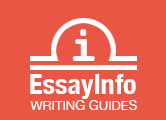The semicolon has three main uses, although the first use below is the most common. The semicolon shows a greater separation of thought and information than a comma but less separation than a period.
First, use semicolons to separate parts of a series when at least one item in the series also has a comma. A semicolon also goes before the final and in such a series: Attending were Tina Lopez, 223 Main St.; Ron Larson, 1414 Broadway; and Robert Zimmerman, 1976 E. Pine St.
The following two uses can add variety, eliminate a word or two, and closely link contrasting or related ideas. But breaking a long sentence with a semicolon into two or more shorter sentences can aid readability and clarity.
Second, use a semicolon to link two (or more) closely related statements that could stand alone as independent sentences (or clauses): The train arrived on time; the passengers were overjoyed. If a coordinating conjunction such as and, but or or separates the two independent clauses, a comma would replace the semicolon: The bus arrived on time, and the passengers were overjoyed.
Third, use a semicolon between two independent clauses when the second clause begins with transition words such as therefore, however, thus and for example: The department had planned to drop the service; however, overwhelming customer demand persuaded officials to keep it.
Place semicolons outside quotation marks. Put only one space after a semicolon.

